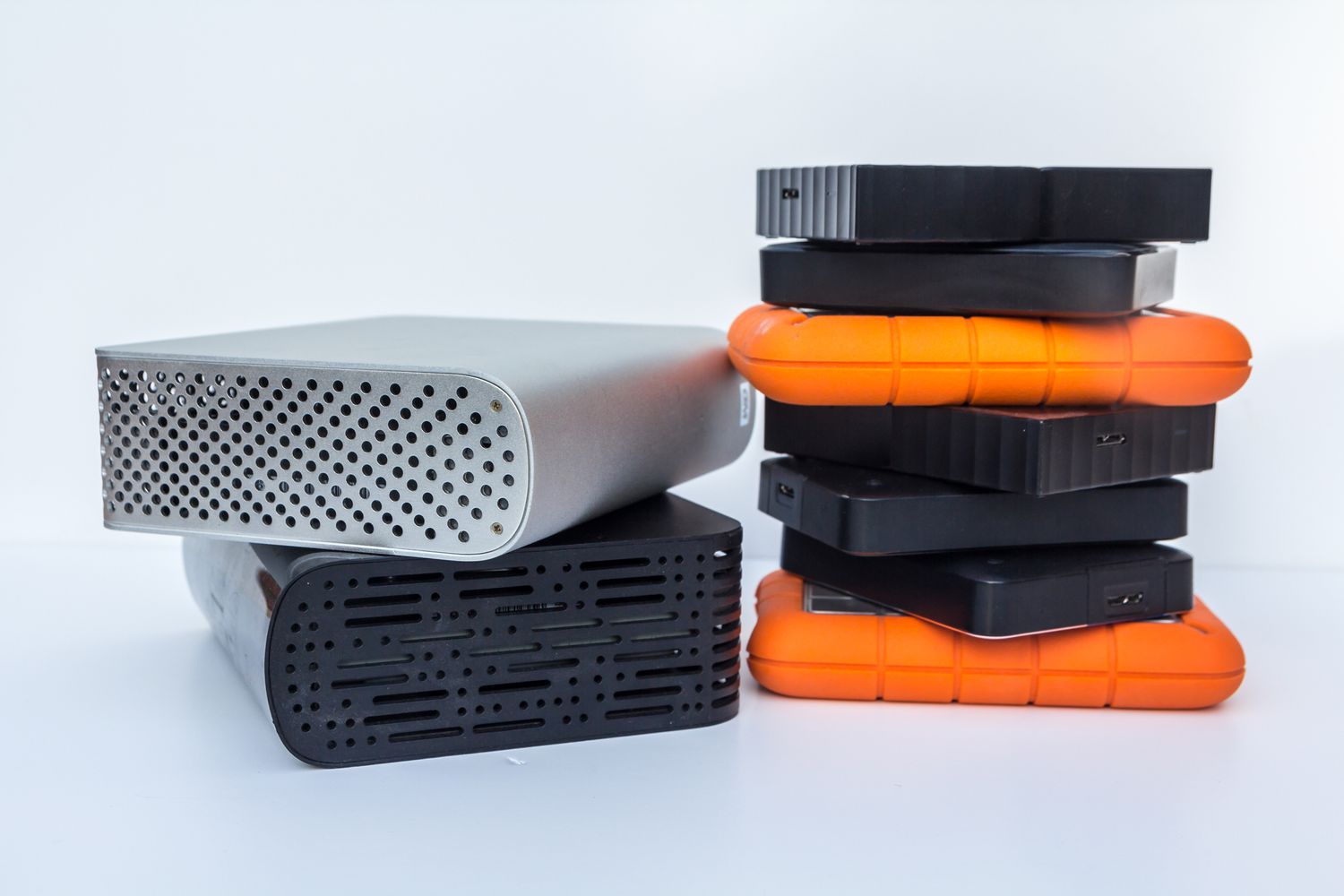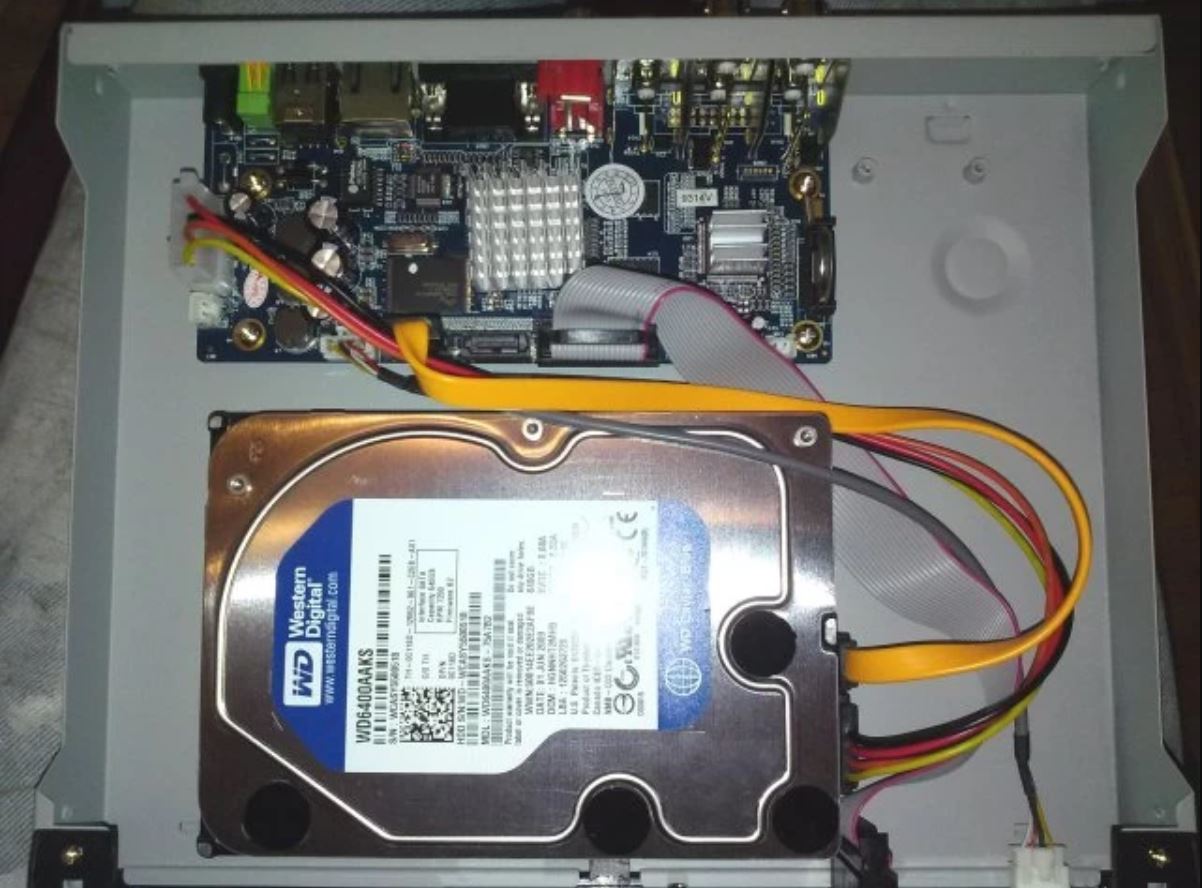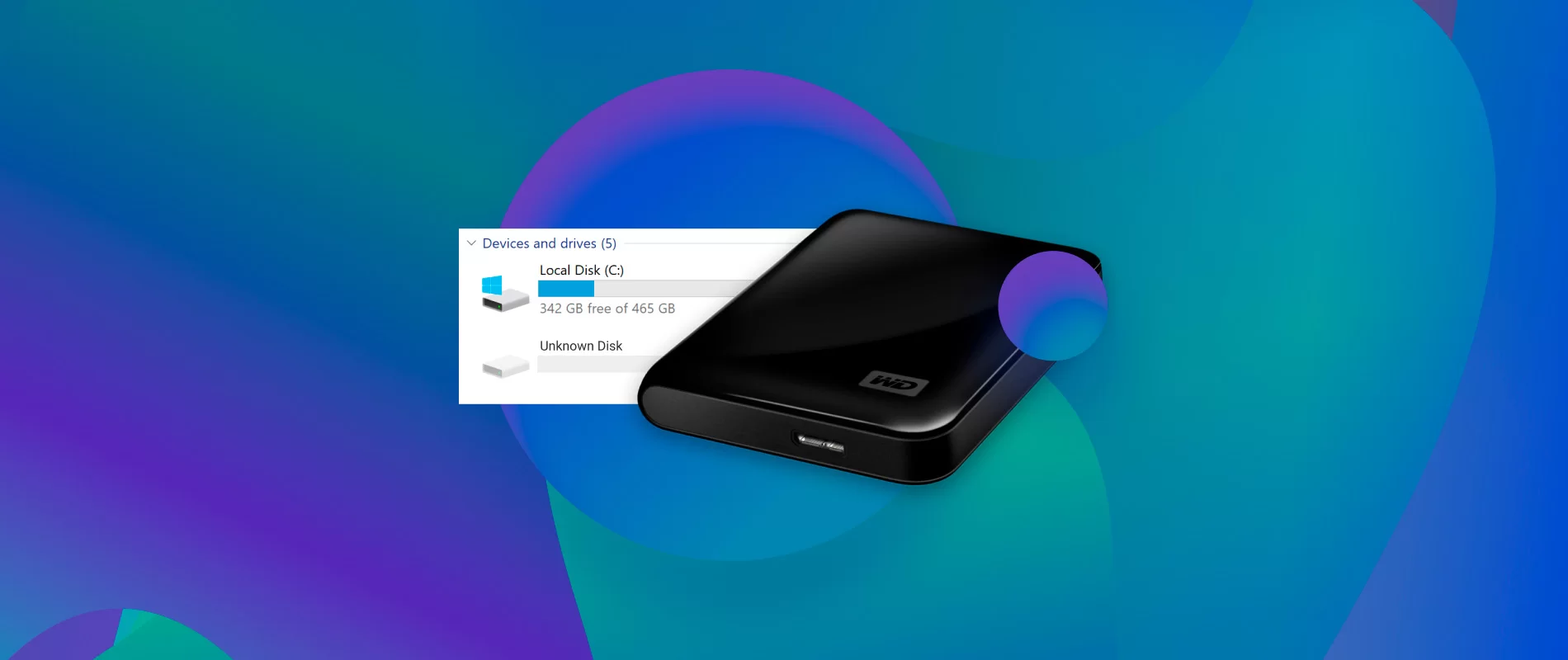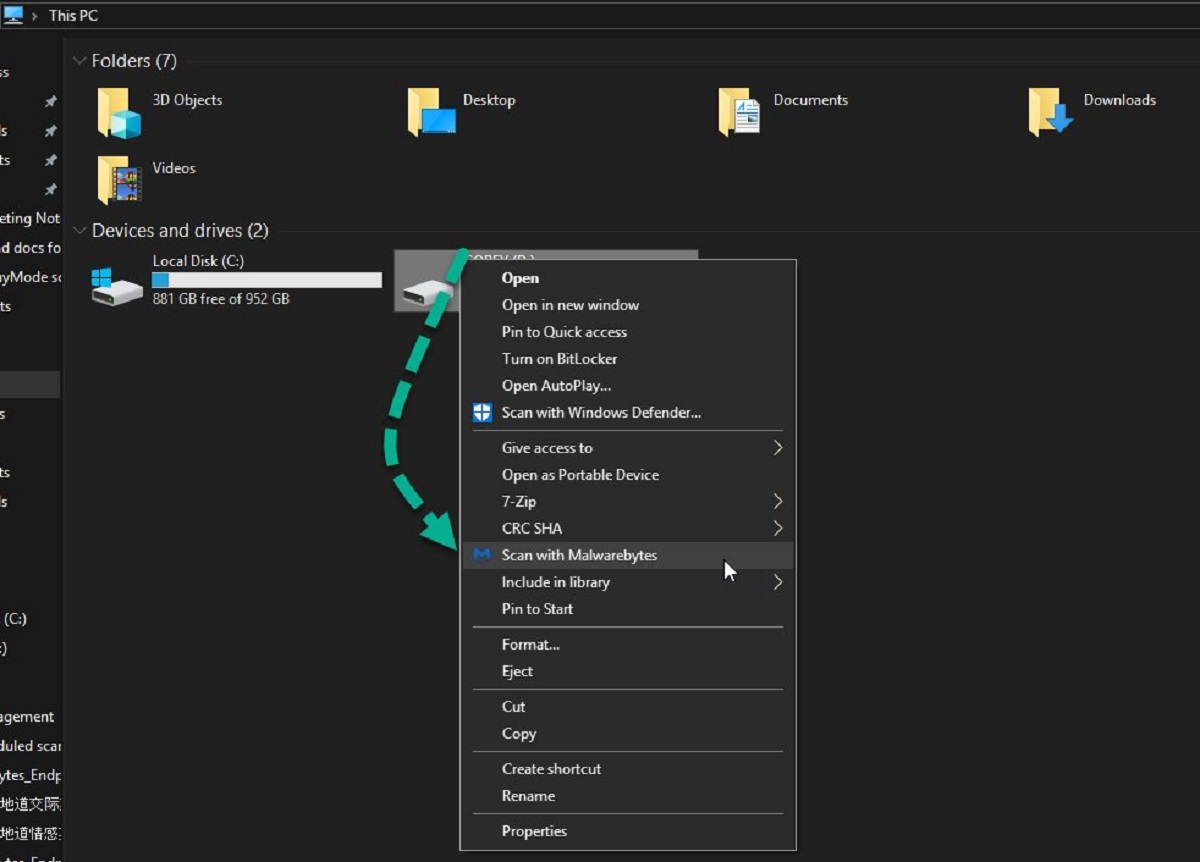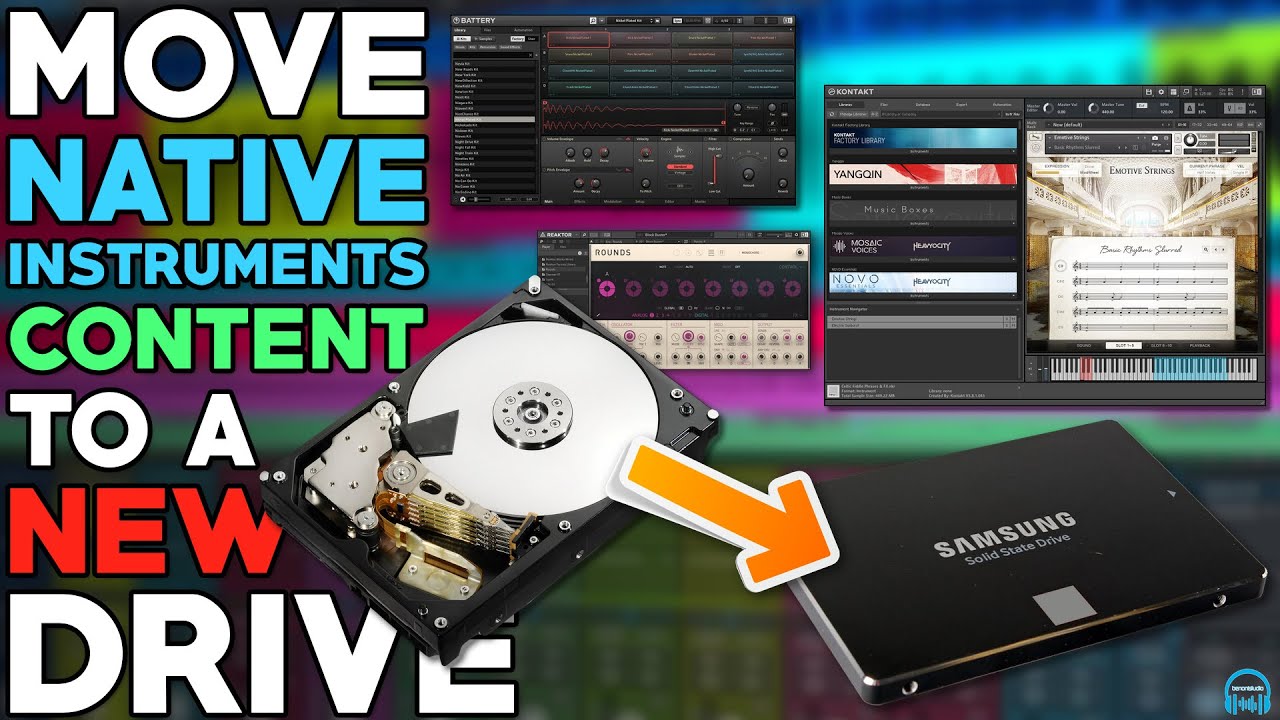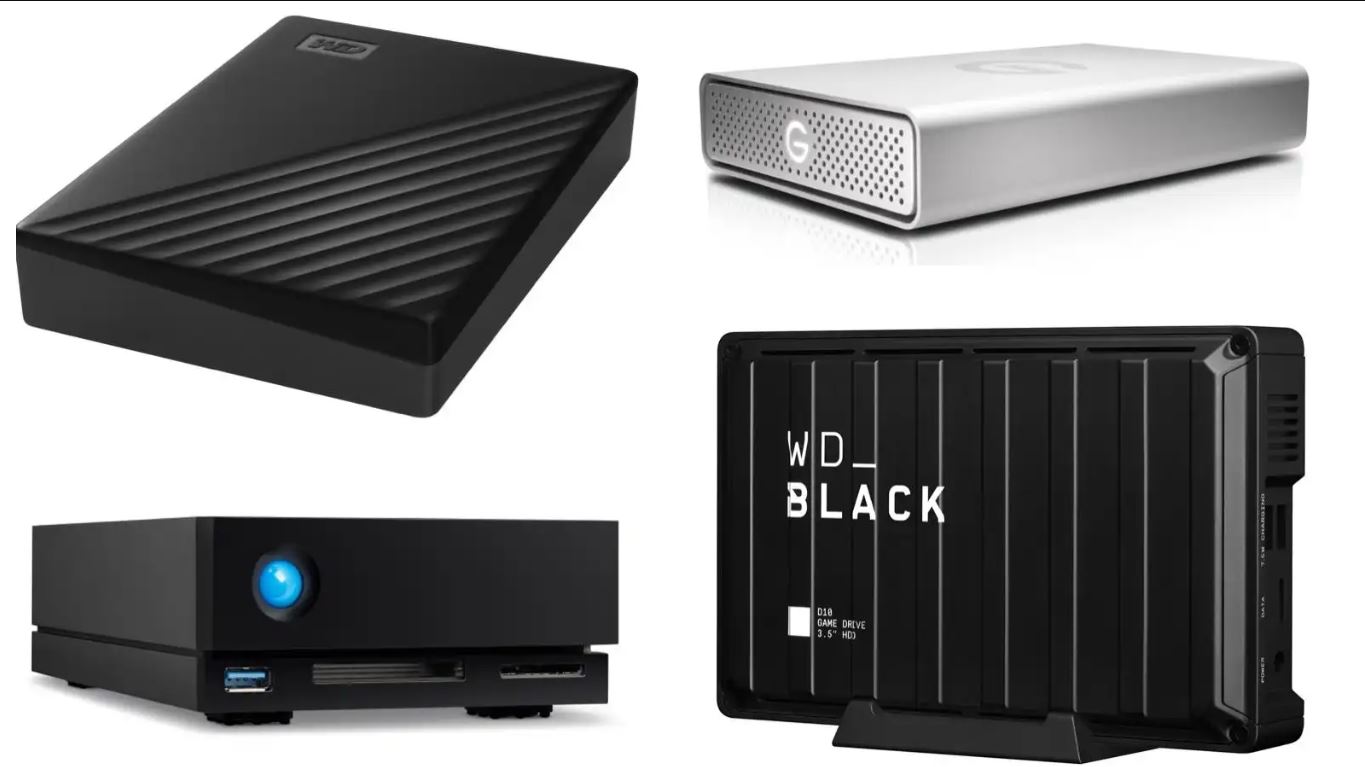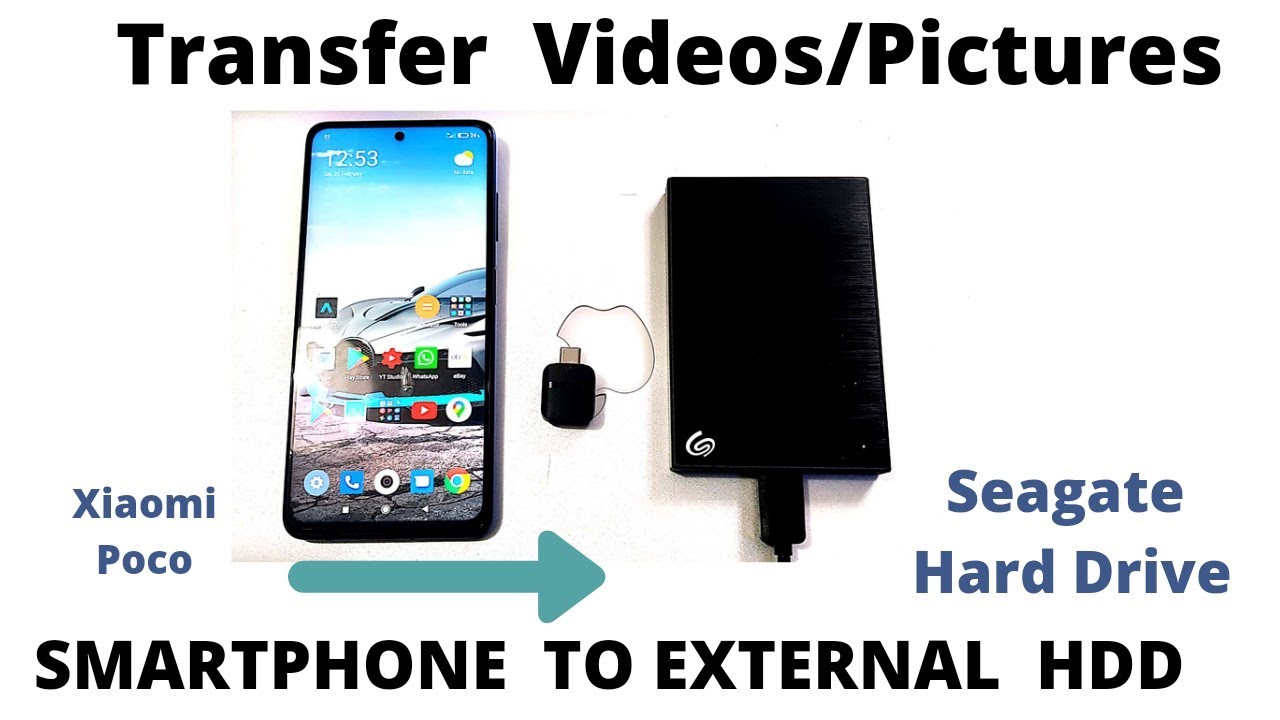Introduction
Welcome to our guide on what to look for in an external hard drive. In today’s digital age, it’s crucial to have a reliable storage solution to keep up with our increasing data needs. An external hard drive is a perfect solution that offers extra storage space and easy portability. Whether you’re a student, a professional, or a casual user, having an external hard drive can provide peace of mind knowing that your important files are safe and easily accessible.
With so many options available in the market, choosing the right external hard drive can be overwhelming. That’s why we prepared this guide to help you understand the key factors you should consider before making a purchase. Whether you’re using it for backups, file sharing, media storage, or gaming, these factors will ensure that you choose the best external hard drive that meets your specific needs.
In this guide, we’ll explore the main features, specifications, and considerations when looking for an external hard drive. We’ll discuss storage capacity, interface, transfer speed, compatibility with operating systems, durability and portability, backup software, security features, and price. By the end of this guide, you’ll have a comprehensive understanding of the key factors to consider when purchasing an external hard drive.
So, let’s dive into the details and discover what makes a great external hard drive.
Storage Capacity
One of the most important factors to consider when choosing an external hard drive is the storage capacity. The storage capacity determines how much data you can store on the drive. As technology advances and file sizes increase, having ample storage space is crucial.
When deciding on the storage capacity, consider your specific needs. Are you using the drive for personal use, such as storing photos and documents? Or do you need it for professional purposes, like video editing or data backup? The answer to these questions will help determine the appropriate storage capacity.
External hard drives typically come in various capacities, ranging from 500GB to multiple terabytes (TB). For casual users or those with smaller storage needs, a drive with a capacity of 500GB to 1TB may be sufficient. However, if you work with large media files, such as videos or graphics, or if you require extensive storage for backups, you may want to consider a drive with a larger capacity, such as 2TB or more.
It’s worth noting that the actual usable space on an external hard drive is slightly less than the advertised capacity. This is because a portion of the storage is used for formatting and system files. Therefore, take this into account when choosing the capacity to ensure you have enough space for your files.
Remember that it’s always better to have more storage space than you currently need. As your data needs grow over time, having extra capacity will help future-proof your storage solution and save you from needing to upgrade too soon. Additionally, if you plan to use the drive for backups, it’s important to consider a capacity that allows for multiple backups and revisions of your files.
Overall, when considering storage capacity, think about your current and future storage requirements to ensure you select an external hard drive that offers enough space to meet your needs, without overpaying for unnecessary storage.
Interface
The interface of an external hard drive determines how it connects to your computer or other devices. It’s an important consideration as it affects the speed of data transfer and compatibility with different systems.
There are several types of interfaces commonly used in external hard drives:
- USB: Universal Serial Bus (USB) is the most common interface found in external hard drives. The latest version, USB 3.0 or USB 3.1, offers faster transfer speeds compared to its predecessors. USB 3.0 provides a theoretical transfer speed of up to 5 Gbps, while USB 3.1 offers speeds up to 10 Gbps. If you have a compatible USB port on your computer, it’s recommended to choose an external hard drive with USB 3.0 or USB 3.1 for faster data transfer.
- Thunderbolt: Thunderbolt is a high-speed interface primarily used in Apple devices. Thunderbolt offers even faster transfer speeds compared to USB, with Thunderbolt 3 providing speeds up to 40 Gbps. If you have a Thunderbolt-compatible device, opting for an external hard drive with Thunderbolt can significantly improve data transfer performance.
- eSATA: External Serial Advanced Technology Attachment (eSATA) is another interface option that offers faster transfer speeds compared to USB. eSATA provides a direct connection to the computer’s motherboard, resulting in faster data transfer rates. eSATA is less common in newer computers and devices, so it’s essential to ensure compatibility before choosing an external hard drive with this interface.
- FireWire: FireWire, also known as IEEE 1394, is an interface mainly used in older Apple devices. It offers decent transfer speeds but is gradually being replaced by USB and Thunderbolt. If you have a FireWire port on your computer, you may consider an external hard drive with FireWire connectivity.
When selecting an external hard drive, consider the interface options available on your computer or device. It’s recommended to choose an interface that provides the fastest transfer speeds supported by your system.
Some external hard drives offer multiple interface options, allowing you to connect to different devices with ease. These drives typically feature both USB and Thunderbolt or USB and eSATA ports, providing versatility and compatibility.
It’s also worth mentioning that backward compatibility is important when it comes to interfaces. Ensure that the external hard drive you choose is compatible with the interface ports available on your computer or device. For example, a USB 3.0 drive will work with a USB 2.0 port, but the transfer speeds will be limited to the capabilities of USB 2.0. Therefore, it’s always beneficial to choose a drive that offers backward compatibility to ensure seamless connectivity.
In summary, consider the interface options available on your computer or device, the desired transfer speed, and the backward compatibility when choosing an external hard drive with the right interface for your needs.
Transfer Speed
The transfer speed of an external hard drive plays a crucial role in determining how quickly you can move data between your computer and the drive. Faster transfer speeds mean less time spent waiting for files to copy or backup, making it an essential consideration when choosing an external hard drive.
Transfer speed is primarily influenced by two factors: the interface and the drive’s internal performance.
As discussed in the previous section, the interface of the external hard drive, such as USB, Thunderbolt, or eSATA, significantly impacts the transfer speed. USB 3.0 and USB 3.1 offer faster speeds compared to USB 2.0, while Thunderbolt and eSATA provide even higher transfer rates. However, it’s important to note that the transfer speed is also limited by the capabilities of the interface port on your computer or device.
Aside from the interface, the internal performance of the external hard drive, including the drive’s RPM (revolutions per minute) and cache size, affects the transfer speed. Higher RPM drives tend to have faster data transfer rates as the disk spins at a higher speed, allowing for quicker access to the data stored on it. A cache is a small amount of high-speed memory within the drive that stores frequently accessed data, improving performance. Drives with larger caches generally offer better transfer speeds.
It’s important to keep in mind that actual transfer speeds may vary from the manufacturer’s advertised speeds. Transfer speeds can be influenced by various factors, including the size and number of files being transferred, the computer’s processing power, and the overall performance of the drive and its interface. Additionally, the operating system and file system used can impact transfer speeds as well.
When selecting an external hard drive, consider your specific needs. If you frequently work with large files or perform data-intensive tasks, such as video editing or gaming, opt for a drive with a higher transfer speed. On the other hand, if you primarily use the drive for personal documents or casual file storage, a lower transfer speed may be sufficient.
It’s important to note that while transfer speed is crucial, it’s not the only factor to consider when choosing an external hard drive. Balance your need for speed with other factors, such as storage capacity, interface compatibility, and price, to find the best overall solution for your needs.
Compatibility with Operating Systems
When choosing an external hard drive, it’s essential to consider its compatibility with your operating system. The compatibility ensures that the drive can be recognized and used seamlessly on your computer or device.
External hard drives generally support multiple operating systems, including Windows, macOS, and Linux. However, it’s crucial to verify the drive’s compatibility with your specific operating system before making a purchase.
Windows and macOS are the most widely used operating systems, so compatibility with these platforms is typically guaranteed. Most external hard drives are pre-formatted in the NTFS file system, which is compatible with Windows. However, macOS can only read NTFS-formatted drives by default and requires third-party software to write to them.
If you plan to use the external hard drive across different operating systems, such as macOS and Windows, consider choosing a drive that supports exFAT or FAT32 file systems. Both file systems are compatible with both Windows and macOS, allowing for seamless file exchange between platforms without the need for additional software or formatting.
Compatibility with Linux operating systems is also an important consideration if you use Linux as your primary OS or frequently work with Linux-based systems. While most external hard drives are compatible with Linux, it’s still advisable to check the manufacturer’s specifications to ensure full support.
In addition to the operating system compatibility, it’s worth considering other devices you may want to connect the external hard drive to, such as gaming consoles or smart TVs. Verify whether the drive supports these devices and if any additional setup or formatting may be required.
Ultimately, ensuring compatibility with your operating system will save you the hassle of dealing with compatibility issues and allows for seamless integration and use of the external hard drive. Be sure to check the product specifications or consult with the manufacturer to confirm compatibility with your specific operating system or devices.
Durability and Portability
When selecting an external hard drive, considering its durability and portability is essential, especially if you plan to carry it with you or use it in different environments.
Durability is particularly crucial for those who travel frequently or need to transport the external hard drive. Look for a drive that is built to withstand bumps, shocks, and vibrations. Some drives are designed with extra protection features, such as rugged casings, shock-resistant technology, and built-in cushioning, to ensure the safety of your data even in rugged or unpredictable situations.
Portability is another factor to consider, especially if you plan to use the external hard drive on the go. Look for compact and lightweight drives that are easy to carry in a bag or pocket. A smaller size and lighter weight make it more convenient to transport the drive, whether you’re going to the office, traveling, or visiting clients.
Another aspect of portability to consider is the power source. Some external hard drives draw power directly from the device they’re connected to, while others require an external power supply. If you need a drive that doesn’t rely on an external power source, opt for one that is bus-powered (draws power from the device via the interface cable) or has a built-in rechargeable battery.
In addition to physical durability and portability, it’s worth considering the drive’s resistance to environmental factors. Look for drives that offer protection against water, dust, and extreme temperatures. This is particularly important if you anticipate using the drive in harsh or unpredictable environments, such as outdoor fieldwork or construction sites.
When assessing durability and portability, it’s important to strike a balance between robustness and convenience. While a durable drive may be bulkier and heavier, it offers better protection for your data. However, if you prioritize portability and plan to use the drive mainly in controlled environments, a lighter and more compact drive may be sufficient.
Overall, the durability and portability of an external hard drive depend on your specific needs and usage patterns. Consider your travel frequency, work environment, and storage requirements to determine the level of durability and portability that suits your needs best.
Backup Software
Backup software is a valuable feature to consider when choosing an external hard drive. While it’s possible to manually transfer and organize files on the drive, backup software provides automated and efficient solutions to safeguard your data.
Backup software varies among different external hard drive brands and models, so it’s important to evaluate the options available to find the one that best suits your needs.
One of the key features to look for in backup software is the ability to schedule automatic backups. This allows you to set a recurring backup schedule, ensuring that your files are regularly backed up without manual intervention. It’s a convenient feature, especially for those who tend to forget or neglect to perform backups regularly.
Versioning is another important aspect of backup software. Versioning allows you to keep multiple copies of your files, including older revisions. This can be useful if you accidentally delete or modify a file and need to revert to a previous version. Look for backup software that provides versioning capabilities, allowing you to restore specific versions of files or folders as needed.
Some backup software also offers features like incremental or differential backups. Incremental backups only back up files that have changed since the last backup, while differential backups back up files that have changed since the last full backup. These features help optimize storage space and reduce backup time by only transferring and storing modified files.
Encryption is another critical feature to consider, especially if you’re concerned about the security of your data. Encryption ensures that your files are protected and can only be accessed with the encryption key. Look for backup software that offers robust encryption algorithms to ensure the confidentiality of your sensitive information.
Cloud backup integration is a valuable bonus feature to have in backup software. It allows you to store a copy of your data on cloud storage platforms, providing an extra layer of protection and accessibility. If cloud backup is important to you, consider external hard drives that offer seamless integration with popular cloud storage services.
It’s worth noting that while many external hard drives come with their own backup software, you’re not limited to using it. You can use third-party backup software solutions that provide advanced features and customization options. Ensure that the external hard drive you choose is compatible with your preferred backup software if you decide to use alternatives.
In summary, backup software offers convenience, automation, and enhanced data protection. Consider the backup features offered by different external hard drives to find one that matches your backup preferences and requirements.
Security Features
When it comes to storing important or sensitive data on an external hard drive, security is a critical consideration. Ensuring that your data is protected from unauthorized access is essential to maintain privacy and prevent potential data breaches. That’s why examining the security features of an external hard drive is crucial.
One of the primary security features to look for is hardware encryption. Hardware encryption uses an onboard encryption chip to encrypt the data on the drive, making it inaccessible without the encryption key. This provides an extra layer of security, as even if the drive is lost or stolen, the data remains encrypted and protected.
Another security feature to consider is password protection. Password protection requires you to enter a password before accessing the data on the drive. This prevents unauthorized users from accessing your files even if they gain physical possession of the drive. Look for drives that offer robust password protection mechanisms, such as complex password requirements and limited attempts before locking the drive.
Fingerprint recognition is another security feature that some external hard drives offer. This biometric authentication method allows you to unlock the drive by simply scanning your fingerprint. Fingerprint recognition adds convenience and an extra layer of security, as only authorized fingerprints can unlock the drive.
In addition to these security features, some external hard drives also offer software-based encryption. With software encryption, the data is encrypted using encryption algorithms, and a password or encryption key is used to access the data. This provides security even if the drive is connected to a different device that doesn’t support hardware encryption.
It’s important to note that while hardware and software encryption offer significant security benefits, they can impact the drive’s performance, particularly when it comes to data transfer speeds. Consider the trade-off between security and performance when choosing an external hard drive.
Finally, in the event of drive loss or theft, remote data wipe capability can be a useful security feature. This feature allows you to remotely erase the data on the drive, ensuring that even if it falls into the wrong hands, your confidential information cannot be accessed.
Ultimately, the security features you require depend on the type of data you store on the drive and your specific security needs. Assess the level of security you require and choose an external hard drive that offers the appropriate security features to protect your data effectively.
Price
Price is a crucial factor to consider when choosing an external hard drive. The cost of the drive should align with your budget while providing the necessary features and storage capacity for your needs.
The price of an external hard drive can vary significantly based on factors such as storage capacity, interface, brand, and additional features. Higher-capacity drives and those with faster interfaces usually come with a higher price tag. If you require a considerable amount of storage space or faster data transfer speeds, expect to pay more for these premium features.
It’s important to strike a balance between price and features. Consider your specific needs and usage patterns to determine the level of storage capacity and interface speed that best meets your requirements without overspending on unnecessary features.
When comparing prices, consider the warranty offered by the manufacturer. A longer warranty period can provide peace of mind and potentially save you money in case of any unforeseen issues with the drive. Additionally, check the customer reviews and ratings for the product to ensure quality and reliability.
Another cost consideration is the cost per gigabyte (GB) or terabyte (TB) of storage. Calculate the cost per unit of storage when comparing different drives to get a better understanding of their value for money. Keep in mind that prices can fluctuate, so it’s important to research and compare prices from different retailers or online platforms to find the best deal.
Consider your intended usage and how long you expect to use the external hard drive. If you need a drive for short-term or temporary storage, you may opt for a more budget-friendly option. However, if you require a drive for long-term storage or critical data, investing in a more reliable and higher-quality drive may be worth the extra cost.
It’s worth mentioning that price should not be the sole determining factor in choosing an external hard drive. While it’s tempting to opt for the cheapest option, compromising on quality and features may lead to data loss or dissatisfaction in the long run. Balance your budget with your storage and performance needs to find the best value for your money.
In summary, consider your budget, required features, and long-term usage when evaluating the price of an external hard drive. Shop around, compare prices, and consider the overall value offered by the drive to make an informed decision.
Conclusion
Choosing the right external hard drive is a crucial decision to ensure that your data is securely stored and easily accessible. By considering the factors discussed in this guide, you can make an informed decision that meets your specific needs.
Storage capacity is the foundation of any external hard drive, so assess your current and future storage needs to determine the appropriate capacity for your files. Remember to factor in the actual usable space and consider the potential growth of your data requirements over time.
The interface is another critical consideration as it determines the speed of data transfer and compatibility with your devices. USB, Thunderbolt, eSATA, and FireWire are some of the common interface options available. Choose a drive that offers a compatible interface with the fastest transfer speeds supported by your system.
Compatibility with your operating system is essential to ensure seamless integration and use of the external hard drive. Verify that the drive supports your specific operating system and consider any additional devices you may want to connect to, such as gaming consoles or smart TVs.
Durability and portability should be evaluated based on your travel frequency and work environment. Look for drives that offer rugged construction, shock resistance, and protection against environmental factors to safeguard your data in various conditions.
Backup software can provide convenience, automation, and enhanced data protection. Evaluate the features such as automatic scheduling, versioning, and encryption offered by the backup software to ensure your files are continuously backed up and efficiently managed.
Security features, including hardware encryption, password protection, and fingerprint recognition, are important considerations, especially for sensitive or confidential data. Select a drive that offers the right level of security based on the type of information you store and your security needs.
Lastly, price should be carefully assessed, considering the storage capacity, features, warranty, and cost per unit of storage. Balance your budget with your specific requirements to find an external hard drive that provides the best value for your money.
By taking these factors into consideration, you can confidently choose an external hard drive that meets your storage needs, performance requirements, and security preferences. Remember to research and compare different options to find the perfect balance between functionality, reliability, and affordability for your data storage needs.







